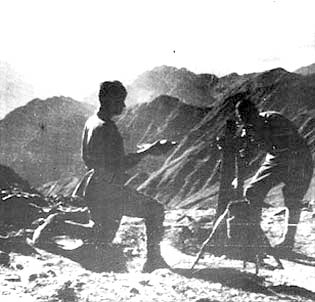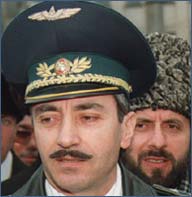
A Soviet Army trench mortar crew in a mountain pass of the North Caucasus during World War II helps to check the German advance. |
On February 23, 1944, Soviet leader Joseph Stalin ordered the Chechens and their Ingush neighbors — some 400,000 people — to be deported to Central Asia and Siberia for “mass collaboration” with invading Nazis. It is estimated that 30 percent of the Chechen exiles died on their way to resettlement or within their first year of exile.
Evidence to support Stalin’s charges remains limited. German forces in the Caucasus had pushed toward the valuable Grozny oil fields, but had been stopped outside of Chechnya at Vladikavkaz in 1942. After years of crushing Chechen anti-collectivization revolts and other flare-ups against Soviet rule, Stalin appears to have decided that having a rebellious Muslim population in the North Caucasus was too risky.
In 1957, after 13 years in exile, Nikita Khrushchev permitted surviving exiles to return and Chechnya and Ingushetia were re-established as an autonomous republic. But when the Chechens returned home, they were often unable to reclaim their property, now occupied by Russians and other neighboring ethnic groups.
Did You Know?
Separatist leader Jokhar Dudayev, who led Chechnya in its bid for independence in the early 1990s, was a child of the Chechen deportations. Born just weeks before their start in 1944, Dudayev and his family were transported from their mountain village to the Central Asian republic of Kazakhstan and forced to work on a collective farm. Dudayev returned to Grozny in 1957.
- Previous: 1910s-1930s: Soviet Chechnya
- Next: 1990s: Independence



